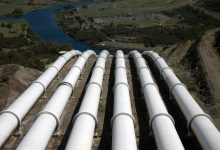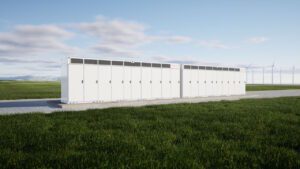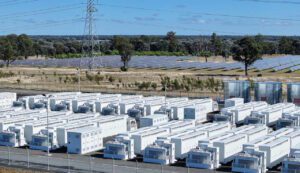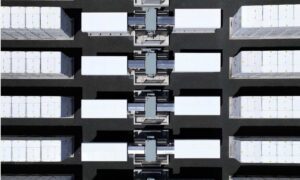The National Parks Association of NSW has called on the federal and NSW governments to scrap the Snowy 2.0 pumped hydro project, releasing a detailed assessment of the multi-billion dollar scheme that shows both financial costs and environmental impacts have been vastly under-estimated.
“Snowy 2.0 should not have been contemplated in the first place, due to its substantial, permanent environmental damage to Kosciuszko National Park,” NPA NSW executive director Gary Dunnett said at a media briefing on Tuesday.
“Sticking a hip 2.0 moniker on it and invoking the nation-building romance of the original Snowy Scheme cannot change the fact that this is environmental vandalism and economic folly … carried out in the name of pretending it’s a silver bullet for an energy policy.”
The NPA report titled ‘Snowy 2.0 Doesn’t Stack Up‘ details how the government may have underestimated the amount of usable energy storage provided by the Snowy 2.0 expansion, and how both the construction of the Snowy Hydro scheme expansion and operation will cause irreparable damage to the Kosciuszko National Park.
It comes as a separate analysis from the Victoria Energy Policy Centre suggests that Snowy 2.0 will not be able to deliver anywhere near the amount of storage claimed, and urges that the project be “paused” if not stopped outright, arguing that there are better options available.
“When announced, Snowy 2.0 was to cost $2 billion, take four years to construct (2021), and be fully funded by Snowy Hydro – none of which has turned out to be anywhere near correct,” the NPA’s Dunnett said.
“The cost has soared to $10 billion, the construction time has more than doubled to 2027 and the Commonwealth government has kicked in $1.4 billion (with more likely to be needed).”

When quoting the costs of the Snowy 2.0 expansion, the federal government has taken an approach of quoting costs for just the civil and engineering works related to expanding the scheme. However, the project will require billions in additional investment in transmission network infrastructure to connect Snowy 2.0 to the rest of the National Electricity Market.
The assessment of the project by the National Parks Association of NSW found that the Snowy 2.0 project was unlikely to deliver the stated amount of stored energy, as the upper Tantangara Reservoir was approximately one-third larger than the lower Talbingo reservoir.
The discrepancy would mean that to recover the full amount of energy stored in the Snowy 2.0 expansion that water would need to be released from Talbingo, and effectively “lost” from the Snowy scheme.
The association also noted that the expected completion date of the project had slipped from an initially indicated 2021 start date, to a present completion date of 2027, making the completion of the Snowy project substantially slower than storage alternatives, such as battery storage.

Citing both the poor financial viability of the Snowy 2.0 project, and the significant prospect of environmental degradation caused by the construction and excavation of new tunnels, the National Parks Association of NSW has called for the federal government to rescind approval of the Snowy 2.0 business case, and for the NSW government to decline to approve the project’s Environmental Impact Statement.
“And this is even more reprehensible as the project will substantially and permanently damage Kosciuszko – one of Australia’s iconic natural places,” Dunnett said.
“The Commonwealth Shareholding Ministers should revoke the approval of the Business Case on the grounds of inadequate estimation of the costs and projected returns of the project to the Australian public.”
And the NSW Minister for Planning should refuse approval for the EIS on the grounds of inconsistency between the enormous scale of the project and the National Park status of the proposed development site.”
As reported by RenewEconomy in September, the environmental impact statement for the Snowy 2.0 project seeks permission to dump material excavated during the completion of new tunnels into the existing reservoirs. The National Parks Association is concerned that this dumping will see potentially toxic materials, including asbestos, entering the Murray-Darling water system.
Ted Woodley, the Treasurer of the National Parks Association of NSW and who formerly served in senior positions with EnergyAustralia, said that it was highly unlikely that the Snowy 2.0 project could ever stack up financially due to the scale of the engineering works required to make it operational.
Woodley stressed that while the National Parks Association opposed the development of the Snowy 2.0 project, in general it was supportive of renewable energy projects and appropriately placed pumped hydro storage projects. The association did not think it was appropriate for such a substantial pumped-hydro project to be built within a National Park.
“There are many other alternatives, even within the Snowy scheme itself, and some of those alternatives, whilst they may be slightly smaller than Snowy 2.0, they would have no environmental impact,” Woodley said.
“They would use the existing assets. Beyond the snowy scheme, there are literally many thousands of alternatives.”
“National parks are for the natural environment. They are there for us, as current generations, and future generations to be able to appreciate and enjoy nature in its pristine state. We have so few areas within New South Wales and Australia that are set aside for national parks.”
“They’re all so precious. And this is going to trash a hundred square kilometres of this particular park. It’s an iconic park.”
The NSW Department of Planning and Environment is currently accepting submissions in response to the Snowy 2.0 environmental impact statement. Submissions close on 6 November.








